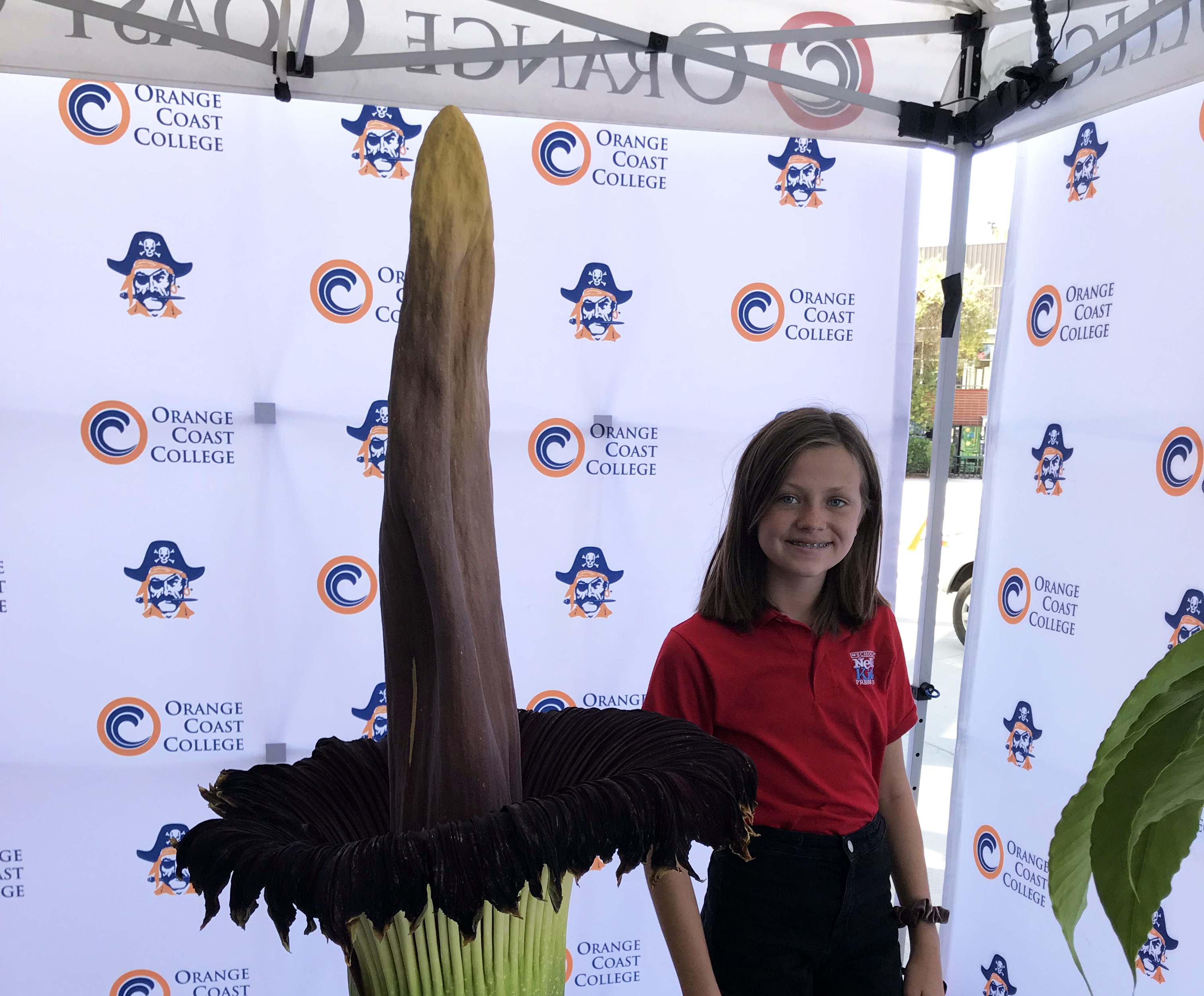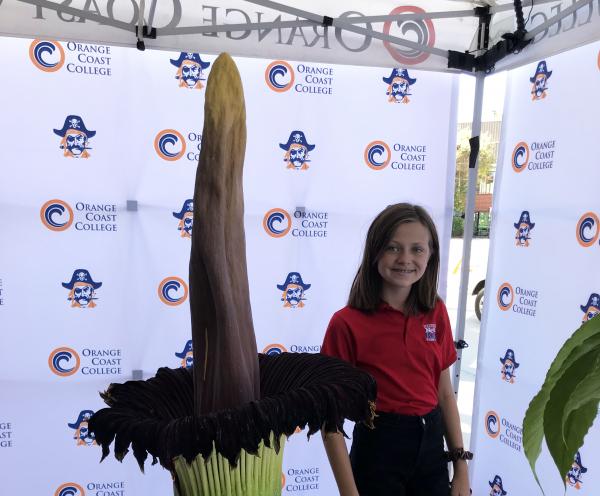KID REPORTERS’ NOTEBOOK
A Flower That Stinks


Annika with the endangered Amorphophallus titanum, commonly known as the “corpse flower”
“Rotten meat” and “dog poop” were just some of the ways visitors described the smell of a unique flower on display. The rare and endangered Amorphophallus titanum was in bloom last month at Orange Coast College in Southern California. Because of its pungent smell, the plant is commonly known as the “corpse flower.”
The corpse flower is native to Sumatra, an island off the coast of western Indonesia. The plant is also cultivated by botanical gardens and research centers. In August, crowds flocked to Orange Coast to sniff the flower while it was in bloom. The bloom and smell only last between 24 and 48 hours.
“It’s amazing how many people want to smell this flower,” said Joe Stead, the horticulture lab coordinator at Orange Coast.
LOOKING FOR DEAD ANIMALS
The corpse flower can grow higher than ten feet tall. It only emits a foul smell when it is in bloom and ready to be pollinated.
The flower is pollinated by beetles and flies, which look for the corpses of dead animals on which to lay their eggs. The odor from the chemicals and the warmth inside the plant help attract these pollinators.
When the spadix (center column of the flower) is done pollinating, the flower shrivels up. To keep the plant healthy, the dried-up portion is chopped off.
The flower will grow back, but not for a while. Several hundred people visited Orange Coast’s lab to smell the flower when it was in full bloom. Those who missed the display will have to wait 2 or 3 years before the corpse flower blooms again.
